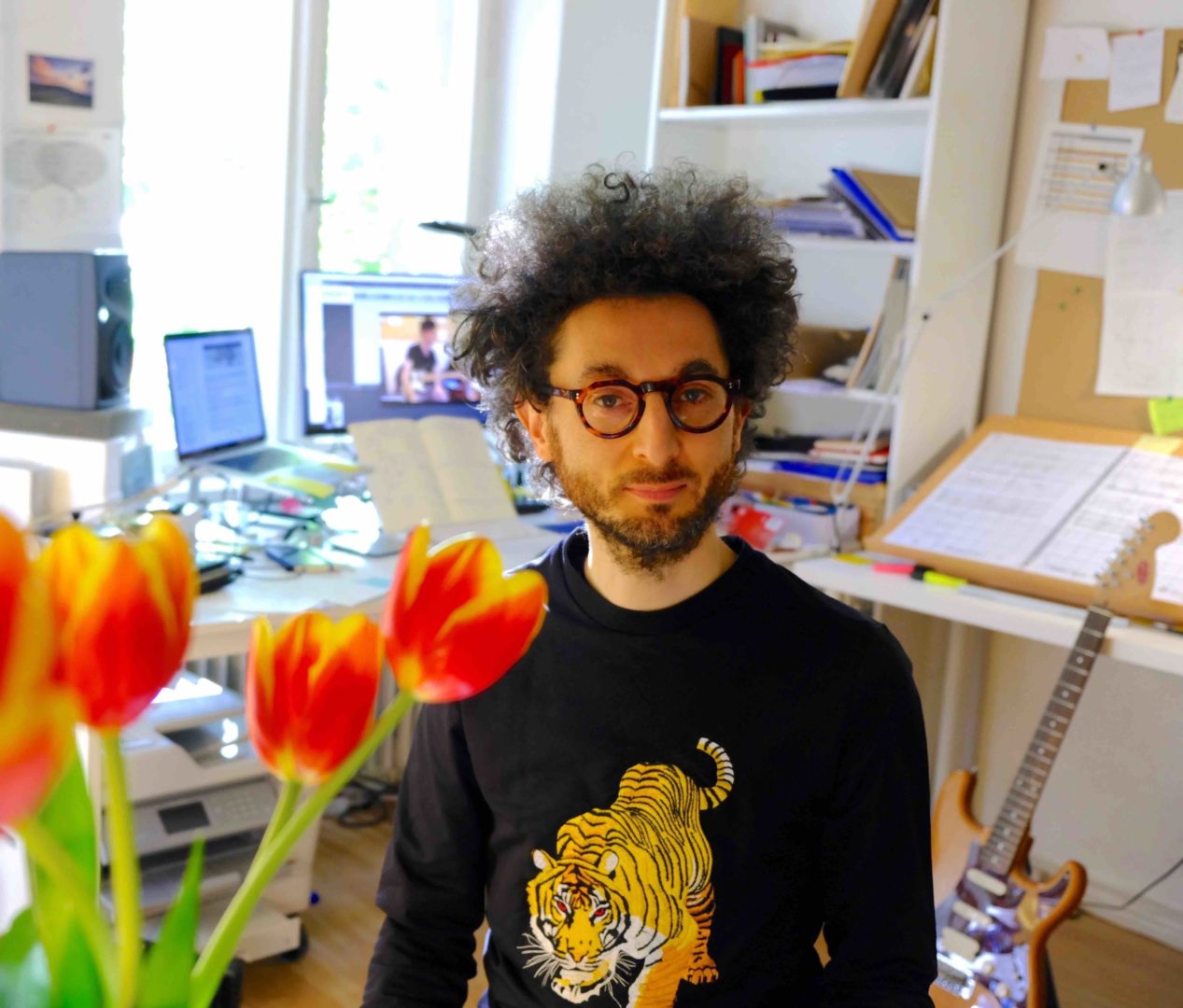De titel Ventriloquium verwijst naar het volgende citaat van Jacques Derrida, dat als conceptueel uitgangspunt diende voor de compositie:
Het is niet gemakkelijk om te improviseren. Het is het moeilijkste om te doen. Zelfs als je voor een camera of microfoon improviseert, buikspreek je of laat je een ander in je plaats de schema's en talen spreken die er al zijn. Er zijn al een groot aantal voorschriften die zijn voorgeschreven in ons geheugen en in onze cultuur. Alle namen zijn al voorgeprogrammeerd. Het zijn al die namen die ons vermogen om ooit echt te improviseren in de weg staan. Je kunt niet zeggen wat je wilt. Je bent min of meer verplicht om het stereotype discours te reproduceren. Daarom geloof ik in improvisatie. En ik vecht voor improvisatie. Maar altijd met de overtuiging dat het onmogelijk is. En daar, waar improvisatie is, ben ik niet in staat om mezelf te zien. Ik ben blind voor mezelf en het is wat ik zal zien, nee ik zal het niet zien, het is voor anderen om te zien. Degene die hier geïmproviseerd wordt, nee, die zal ik nooit zien.(Jacques Derrida, Screenplay and Essays on the Film Derrida by Kirby Dick and Amy Ziering Kofman, Routledge, New York 2005)
Deze vragen worden onderzocht door een trio dat voornamelijk genoteerde muziek uitvoert tegenover een puur improviserend duo te plaatsen en door verschillende soorten contexten (“hogere structuren”) te creëren, waarin het individu (d.w.z. de improviserende musici) volgens de “regels” van de structuren functioneert. In het eerste deel bijvoorbeeld moeten de twee improviserende musici zich zoveel mogelijk “integreren” in de ensemble-textuur. In het tweede deel begint deze ensemble-textuur te differentiëren en splitst zich in verschillende richtingen, de improvisatoren beginnen “individueel” gedrag te vertonen en worden gevraagd de uitgeschreven structuur te “destabiliseren”.
Aan het eind van dit tweede deel gaan de twee improvisatoren alleen verder, en vestigen een nieuw groepsparadigma, dat gegroeid is uit de voorgaande delen. Op zijn beurt begint het trio (vc, gtr, perc) deze nieuwe structuur te destabiliseren in het volgende deel, door gebruik te maken van vooraf gecomponeerde tekstfragmenten, gecombineerd met vrije improvisatie. Verschillende soorten “allianties” worden gecreëerd, en onderzoeken hoe vooraf gecomponeerde tekst/vastgelegde structuren de “vrije” improvisaties beïnvloeden. In het vijfde en laatste deel wordt geleidelijk een nieuwe structuur opgebouwd, terwijl “residuen” van de voorgaande structuren als uitgangspunt dienen voor de “achtergrond-improvisaties” van zowel het trio als het duo.
Deze improvisaties worden beetje bij beetje uitgedund, totdat er een duidelijk nieuwe structuur ontstaat waarin de twee improvisatoren weer moeten integreren. Het zal inmiddels duidelijk zijn dat deze compositie helemaal geen “dubbelconcert” is voor improviserend duo met trio en live-elektronica. Alle instrumenten worden als gelijken behandeld, alleen de manier van communiceren tussen de instrumenten verschilt (en verandert gedurende het stuk), en het is precies op dit domein dat het belangrijkste “onderzoek” wordt gedaan. De manier waarop de componist structuren en informatie creëert, wordt geconfronteerd met/verrijkt door de manier waarop deze informatie wordt uitgewerkt tijdens de improvisaties.
Het concept van het “buikspreken” is, op een ander niveau, ook uitgewerkt in de spatialisatie van de compositie. Elk instrument wordt (sterk) versterkt en het versterkte geluid wordt naar een vaste luidspreker voor elk instrument gestuurd, die aan de andere kant van het podium staat. De instrumentalisten regelen de hoeveelheid versterking in deze luidsprekers met hun volumepedaal. In het begin van de compositie is de relatie tussen instrument en luidspreker 1/1. Vanaf sectie B begint de live-elektronica dit 1/1-beeld te “vervormen”, met korrelige processen die worden losgelaten op de live-geluiden.

